Brett Helquist

Where are you from originally? What were some of your earliest artistic influences?
I grew up in Arizona, Utah, and New Mexico. My earliest influences were the daily comic strips in the newspaper, specifically things like Alley Oop, which is a great strip about a time-traveling caveman. I just love those old comics. When I thought of becoming an artist, I thought of drawing comic strips. Then when I was about ten, my mother put me in an art class run at the local art supply store; that’s where I started learning how to paint a little bit. After that I kind of dropped it and didn’t do anything with it all through middle school and high school.
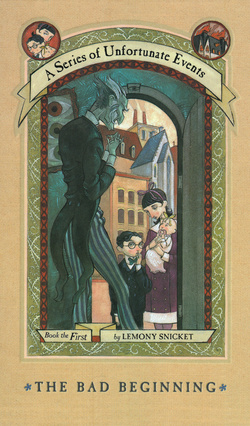
What prompted you to get back into it in college?
I served a mission in Hong Kong and fell in love with Chinese brush painting. I wasn’t much of a letter writer, so I bought a brush and some paper, and on P-days while the others were writing multiple letters, I started trying to imitate these paintings. That sparked some interest again.
Then when I was back in school at BYU, I hit a point in my engineering curriculum where I just wasn’t happy. I was doing well enough, but it didn’t feel right for some reason. I took a painting class for one of my electives and found myself liking that more and more. Although I didn’t really contemplate making a switch, it just kind of popped up.
One problem was that although I loved painting, I didn’t really like what I saw coming out of the HFAC—the more abstract kind of expressionist work. I liked to look at it but could never see myself doing it.
But then I met someone who was in the illustration program, which was in the Brimhall Building at the time, separated from the art department. I just looked around at what they were hanging on the walls and that seemed more like something that was of interest to me. I talked to Bob Barrett, the chair then, and learned they had an accelerated program that covered your first year of curriculum over a spring and summer term. This was winter semester, so I thought, “I’m just going to give the spring and summer to this to see how it feels. If I don’t like it, I’ll just slide back into my engineering classes and go on.” But it kind of grabbed hold of me. It just felt good. Who knows why these things work—it just seemed like the thing to do for me.
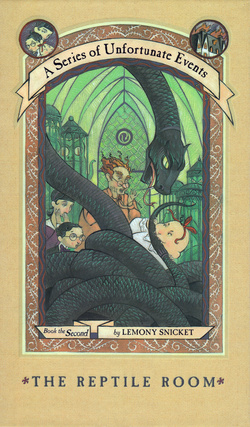
You’ve said that some of your biggest influences are artists like N. C. Wyeth, Howard Pyle, and Dean Cornwell. What is it about their art that most inspires you?
Part of it is the subject matter. It comes from all the stories I loved to read when I was a kid: Robin Hood, old cowboy stories, the American West, Treasure Island, Kidnapped. When I first saw illustrations of stories like these, I really fell in love with them. These are the kind of stories that I would like to be illustrating. I still love a good pirate story more than anything.
Then beyond that, with all these guys, there’s just a certain elegance to their design, the way the illustrations relate to the page. It’s very classical in a way. There’s a part of my mind that’s quite scientific, and math has never been a problem for me.
So what I see in the drawings of Wyeth, Cornwell, and Pyle—who was called the father of American illustration—is discipline. Rather than just being creative and kind of loosely expressing themselves, they had a technique. There’s an understanding of light, of basic form, and components like that. Early on I could see that and it really appealed to me.
There’s a lot of science to drawing—back in the day, all the great scientists were artists too—and I think there’s something in these illustrations that really appealed to me in that way.
How long would it take you to do a black-and-white illustration?
For the Unfortunate Events, those black-and-white drawings probably took one to two days to compose and then a good long day to get done. Most people don’t know about the composition part, but that’s really where all the work is: in the composition and making sure everything fits, getting all the details of costuming, and so forth.
So on those, it’d take a day or two, sometimes more for more complex ones. But generally I can execute those in about a day. It’s a long day, though. A color painting like the one I’m just completing for a Scary Stories 3 cover will take about a week to compose and then another to paint, so about two weeks all together from start to finish.
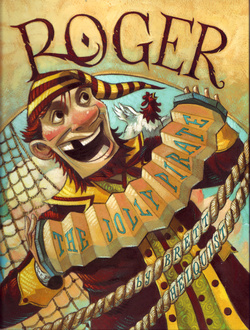
Do you have a favorite medium? Do you prefer black-and-white or color?
Painting is probably where I feel most comfortable, but I like a good black-and-white drawing too. So I don’t prefer one or the other, really.
I love colors, though. If I were doing all black and white, I’d get anxious about it. After a while, I’d want to do a color piece.
You don’t often use live models, but you use books as your references for visuals.
Yeah, it helps to see it. I don’t make anything up. I use pictures to get the detail of what things look like, and then I’m able to manipulate them and put them in the context I need them to be in.
Over the years, I’ve learned to see an object from one angle and then draw it from any point of view. When I was in high school, I didn’t take any art, but I took a lot of mechanical drafting, so I learned about how things fit together, about their basic shapes.
Also, I frequently combine things, such as parts of costumes: I take part of one and add it to a detail from another one.

How did you get started after you finished school? Wasn’t The Bad Beginning, the first in the Unfortunate Events series, your first book?
It was my first book, but I’d been illustrating for about seven years before that. After I graduated with my BFA, I got a job at the Waterford Institute in Provo, who hired a lot of illustration graduates. They were designing and producing educational software and using illustrators to animate their games. I got a fairly high-paying job there and thought, “If I buckle down, in two years I can pay off my student loans and have enough money to head to New York and give it a try.” At the time, it seemed like every illustrator I admired either was living in New York or had for a time. Also, I wanted to do books, and this is where they make books. So I thought, “I have to go to New York as soon as I can.” But a month and a half into that job, they lost the funding that they hired me on, and I was laid off.
I started making plans, working on my portfolio, and trying to market myself like they taught us in school. I kept working in my BYU studio space through the summer until the new students got there, so I was there when an illustrator here in New York named Robert Neubecker called the school and expressed some interest in having an intern for a few months. Even though I’d graduated, I called him and said I’d take it.
So I left for New York way sooner than I had planned. I just figured I’d stay as long as I could. The internship was four months and didn’t pay but did provide housing through a friend of his, so I didn’t have any rent to pay. The work was only three days a week, so I had two days to get out there and hustle. And here I am, seventeen years later.
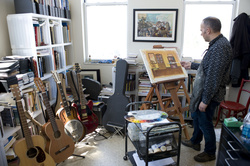
Congratulations. A lot of artists don’t last here that long.
The first couple years were a little rough, but once I got here, I just fell in love with it. I’m not one of those people who had to get out of Utah; I love Utah. But once I got out, I realized how much I was missing in life; just cultural things like concerts in the park and street musicians and this cultural life that I’d never really known. So I determined that I was going to stay at all costs.
I had my dad sell my truck back home, I found a place, and I started getting illustrations out there. I burned through my savings in a few months and found some temporary work correcting copy at ad agencies late at night. That started leading to more and more work. It was weird because I had no real skill, but I showed up on time, I didn’t complain, and I stayed until the job was done—utilizing the Mormon work ethic, I guess. Eventually that ended up becoming a full-time job at KPMG, the big accounting firm. They had an in-house design team that designed their presentations, and I helped with those for five or six years.
After three years, I started cutting down to three days a week, and by my fifth year I was just on call when they needed me and could illustrate the rest of the time. The drawings I was doing were for magazines and newspapers, though. Children’s books are a little harder to break into because there’s more at stake financially, and thus the publishers are less willing to take a risk on a new guy. With that barrier and the full-time job, I kind of got distracted from doing books. I found myself close to being this full-time editorial illustrator and just realized I was not really happy with it; I was burned out. There are some really great editorial illustrators, and I could see clearly that I wasn’t going to be one of the great ones—I was competent is all.
I remembered I came here to do books and never really did anything with it. At that point, I took a month off from my job and didn’t take any illustration assignments and just did a portfolio that was more suited to children’s books. I started showing that around and within about a week I met the agent who two weeks later got me the Lemony Snicket job. It happened really fast. I guess I was just ready at the time.
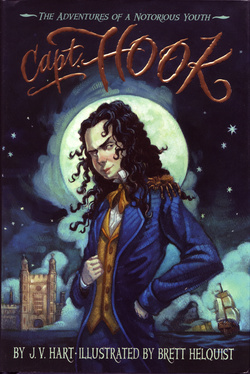
Was that a hard job to get or was the Lemony Snicket thing still under the radar?
It was still under the radar. I mean, I was a nobody, the author at the time was a nobody, and the editor—you know, this was pretty much her first thing she brought in herself. We were all nobodies.
At first it got some attention—some nice reviews, and the sales were pretty good—but it was years later that it became the crazy thing that it is now. At the time it was just a job. I said, “Oh good, I’ve been trying to do books and here’s my first book.” I even read the thing and pretended to consider it, but when they called and said, “We’ve got a manuscript that you’d like,” I immediately said, “I’ll do it!”
Was it planned to be a thirteen-book series at that point or was it just to be a few books?
The first contract was for four books, and then we did another contract of four. Even at the time of the second contract, it was still low profile. But then by the third contract, for the last five books, it was pretty crazy. So it did take some time, yeah.
How has that series influenced your work or your reputation since?
It was night and day. Within a year of doing those I was able to quit my part-time job altogether. I was getting more offers to do books than I could say yes too.
I think my gut instinct was right about the editorial illustration, because, like I said, I was a competent illustrator and had a small group of clients who were happy to hire me regularly, but I was never going to excel. I’d never been in any of the annuals or had any real notice from the illustration community. I was just a kind of competent, reliable illustrator for a certain group of clients. But then with the Lemony Snicket job, suddenly within a year I was getting some professional praise. So I guess it was one of those rare cases where I trusted my instincts and they were right.
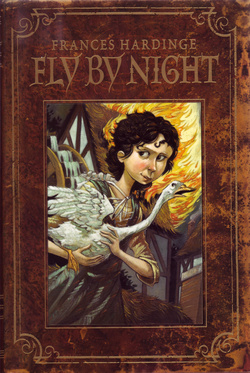
Since then you’ve done other young adult novels and picture books. Is there a format that you prefer, or do you like working in them all?
I’ve done two picture books and the rest are all novels in the Snicket age group.
I love doing a picture book, but the amount of work compared to an illustrated novel is enormous. It’s at least ten times the work and not ten times the money. Well, picture books usually pay off in the end—you just don’t see it all in front of you. I get more royalty on a picture book than I do on a novel. So, if it’s reasonably successful it eventually all will balance out, but the illustrated novels are better.
Like the Snicket books—I turned those around in six weeks from when I got the manuscript to completion, so that gives you some idea of a sense of the time involved. Economically that kind of thing is a lot better for me. A picture book is about the same amount of money up front, but it’s six months to a year to get it done, so you can get a year’s money in six weeks or take a year to do it.
And in something like Roger, the Jolly Pirate, a picture book you wrote and illustrated a few years ago, those are all full-spread illustrations.
Yes, and they’re all color too. That’s why it takes so long. So with Roger, I don’t remember the exact count, but it was at least forty full-color illustrations. That’s a lot of work. And with that one there’s the writing too, so that adds another level of work to get done.
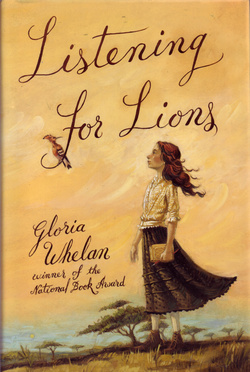
What was it like being an author for the first time?
It was kind of scary. It took a little while to get into and I’m still not used to it. I just finished my second authored book, Bedtime for Bear, and it still hasn’t changed that much.
Roger started because Susan Rich, the editor of the Snicket series, said, “I’d love to do a picture book with you. I’m looking for a manuscript, but sometimes they take a long time to find the right match. In the meantime, if you have any ideas for writing one yourself, I’d love to see it.”
I had never thought of myself as a writer, but she said, “Don’t worry about it. Just come up with the plot and the pictures, and I can help you polish the writing.”
At the time, I didn’t think anything would come of it, but I thought, “So many people would kill to have the ear of an editor on a story idea.” So I decided to do it, thinking, “I’m just going to write a story, see if it’s any good, and submit it to Susan to see if I could make it better.”
I thought it would either go on for years or just fizzle when they realized I couldn’t write. But I approached it as a learning opportunity that would be foolish to pass up and started working on a story. I loved pirate stories when I was a kid, so I thought I’d write something there and came up with this idea of Roger. I gave it to Susan and she read it and gave me a contract. It was like, “Oh, geez, now what do I do? I don’t know how to write a book.” It was really sloppy when I first did it, but I’m getting more used to the idea of being a writer, though I still think of myself as an illustrator first.
Was it any different coming back to the process with your new book, Bedtime for Bear?
No, it was just as hard and took just as long. Both of those took me, all together, about four years each to get done, although that wasn’t four years of working on them exclusively. With the illustration, I’ve been doing it long enough that I’m confident with it. I get a job, sit down, and know exactly how to start mentally, how to get right into it. If I run into a wall, I know how to think my way around it and solve the problem.
With writing, I don’t have that skill, so there’s a lot more give and take with Susan. Then all this anxiety sets in, and I start to tell myself, “I don’t know how to fix it. I don’t know what to do. I’m not a writer.” And then months may go by before I even sit down and force myself to try to do something with it.
When it’s your own book, nobody’s waiting for it. I’ve got a contract to fulfill, but I’m doing so much work for them in the meantime that no one’s going to call me and say, “We need a book next month.”
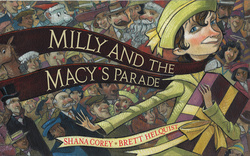
How do you like working for the children’s market?
It’s great because the subject matter is really appealing to me. I’m a rather lighthearted guy and would rather read a good funny story than heavy literature. I read a lot of children’s literature for my own enjoyment because I’m a forty-year-old man but still love a good story. I love good adult literature too, but some people need art to be really deep and heavy, which just isn’t where I find my greatest enjoyment. I appreciate it and know that it has its place, but for me, I just love a good story—and if it makes me laugh, all the better. So I feel that the children’s book market is perfect for me.
Earlier you mentioned your work ethic coming from your Mormon background. Are there other ways that the gospel influences your work? Or does that ideal not apply too much because you’re illustrating other people’s stories?
Like with anything, if you’re living your religion, it affects all aspects of your life—or it should. But I don’t consciously think about putting any religious material into my pictures, because I’m illustrating a story. It does affect the kind of jobs I consider, though. There have been rare occasions when I’ve turned down jobs because of moral considerations. I took one job that was good for my career but which I questioned in hindsight: it was a New York Times Book Review cover for a story about some books that had come out that all had strange love triangles and things. Not that I did anything risqué, but I still wondered if I should show my mom the cover, which I did and she was fine. After that I thought, “Okay, from now on I need to make sure I’m not at all hesitant to show my mom what I’m doing.”
Your work speaks about your values, indirectly if not directly. Luckily I’m in children’s books—and I’m at the younger end of that too, usually in the eight-to-twelve range. I’m not doing the teenage books, some of which can be rather risqué. But it’s hard to market something I wouldn’t approve of to eight-to-twelve-year-olds because parents just aren’t going to buy that for those kids.
So I’m lucky that I’m where I am; it’s rare that I ever even have to consider anything like that.
Do you think the converse is true? Is it fair to expect LDS artists’ secular work to be contributing to the building up of Zion? Or is it sufficient for them just to do a good job?
I actually think that the best thing for Mormons is to just excel in what we do. If a Mormon artist is doing art of high quality, regardless of the subject matter, I think they’re serving the Church well, just as an example of someone who’s faithful and doing quality work. That’s all I try to do. I don’t feel the need to be the artist of the Mormon story.
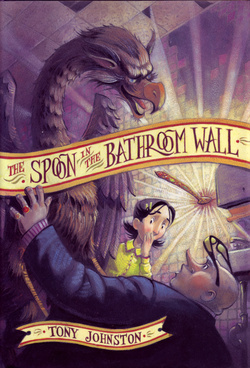
Do you have any advice for young Mormon illustrators who might be reading this and who want to wind up where you are now?
People ask me that a lot, actually. The people I’ve met over the years who have succeeded have had varying degrees of talent—some with skills I’m still jealous of and others whose work is less impressive—but they actually all share one thing in common: persistence and a work ethic; work ethic in the sense of not just working hard but working at something until it works.
Out of the fifteen illustration majors who graduated with me at BYU, there are only three of us who actually succeeded in illustrating. The others all have good careers in creative fields, but there are only three of us who are actually either illustrating or painting pictures for a living. We all started out about the same, putting together a little marketing material, sending it out to people and, of course, getting no response.
The only difference between me and those who left is that I did it again and still got no response. Then I did it again and still got no response. At some point, I just thought, “Well, this is what I’m trained to do. This is what I set out to do. So just do it, and keep doing it.” I was lucky that I had the work that kept me going.
A few years ago I heard an interview with the national poet laureate that impressed me. In his professional career he worked as a high-level executive at a major investment firm. That was his day job for around twenty-five years. As he told the story, he said, “I had this job because I had a family to raise, but I wanted to be a poet.”
So for twenty-five years, after working this high-level executive job, he went home and wrote poetry for two hours each night. Some nights he was so exhausted that he cut himself a little bit of slack—well, I say “slack,” but he didn’t slack. All he did those nights was take what he wrote the previous night and rewrite it. He did that for twenty-five years and ended up being the poet laureate.
When I heard that and was starting out, I thought, “That’s what I’m going to do. I’ve got a job that pays the bills, so I’ll just go home and work on my portfolio every day,” and that’s what I did. That’s the only thing that works. The overnight sensation is rare. Most of us don’t have that kind of talent.
If there’s something you really want to do, just find a way to keep on doing it.
I think that kind of passionate commitment to something says something about how you feel about it. For me, they’re not just pictures in a book; they’re really something else, something extraordinary—even if they’re not my illustrations.
Long before I even conceived that illustration as a career was possible, I always loved a book with a good picture in it. That kind of passion and connection say something about a person.
I like to think that even if my career had gone completely differently, I would still be doing illustration on some level just because it’s what I like to do.
That’s the advice I usually give. I think talent and ability really don’t factor into it too much; persistence is much more important. You learn what you need talent-wise by doing it; at the end of a job you can’t help but be that much better. Persistence and passion matter most. ❧
